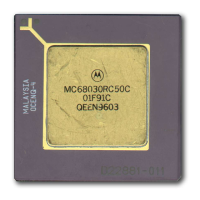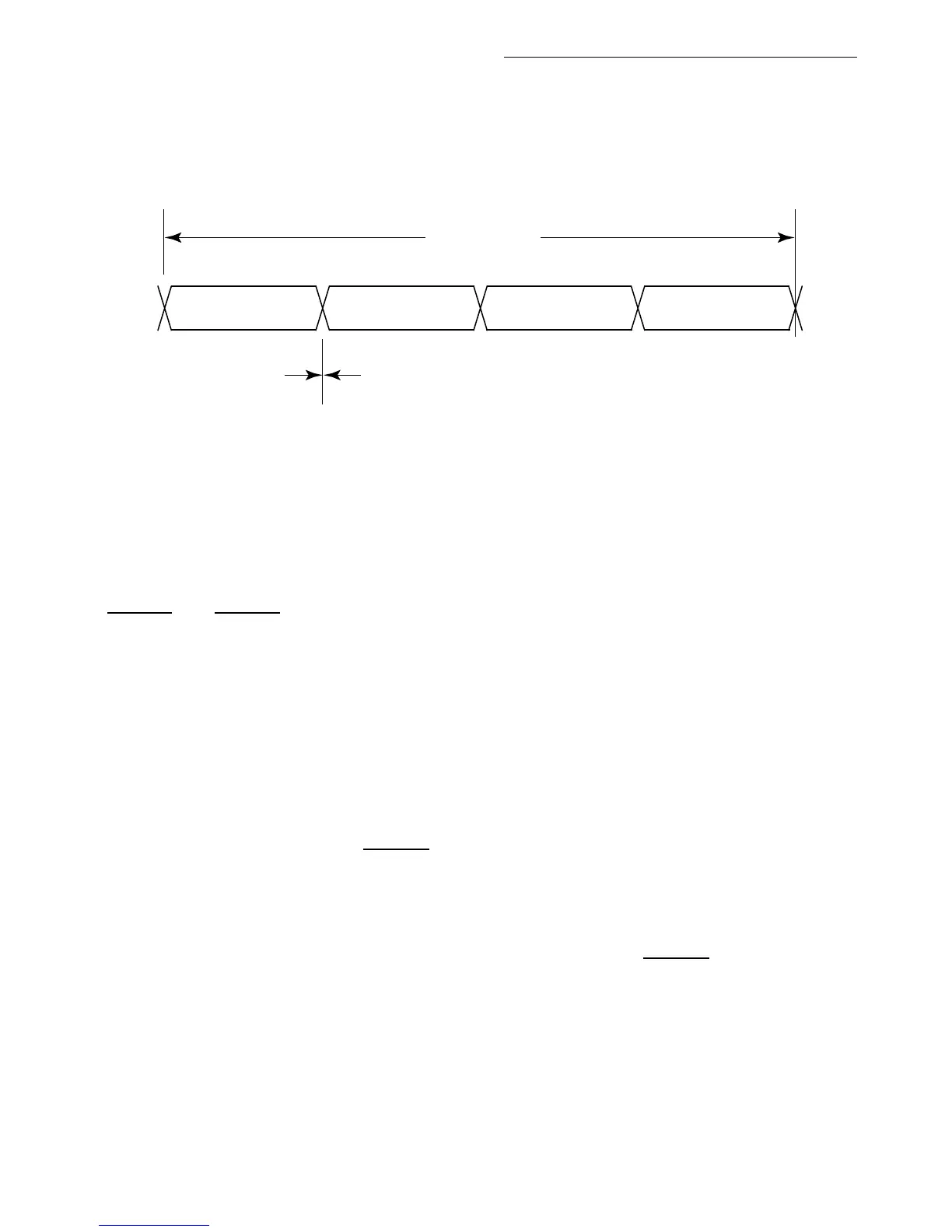On-Chip Cache Memories
MOTOROLA
MC68030 USER’S MANUAL
6-13
burst operation is available to the EU after the first cycle is complete. The microsequencer
must wait for the burst operation to complete before requesting the second portion of the
operand. Normally, the request for the second portion results in a data cache hit unless the
second cycle of the burst operation terminates abnormally.
The bursting mechanism allows addresses to wrap around so that the entire four long words
in the cache line can be filled in a single burst operation, regardless of the initial address and
operand alignment. Depending on the structure of the external memory system, address bits
A2 and A3 may have to be incremented externally to select the long words in the proper
order for loading into the cache. The MC68030 holds the entire address bus constant for the
duration of the burst cycle. Figure 6-12 shows an example of this address wraparound. The
initial cycle is a long-word access from address $6. Because the responding device returns
CBACK
and STERM (signaling a 32-bit port), the entire long word at base address $04 is
transferred. Since the initial address is $06 when CBREQ is asserted, the next entry to be
burst filled into the cache should correspond to address $08, then $0C, and last, $00. This
addressing is compatible with existing nibble-mode dynamic RAMs, and can be supported
by page and static column modes with an external modulo 4 counter for A2 and A3.
The MC68030 does not assert CBREQ
during the first portion of a misaligned access if the
remainder of the access does not correspond to the same cache line. Figure 6-13 shows an
example in which the first portion of a misaligned access is at address $0F. With a 32-bit
port, the first access corresponds to the cache entry at address $0C, which is filled using a
single-entry load operation. The second access, at address $10 corresponding to the
second cache line, requests a burst fill and the processor asserts CBREQ
. During this burst
operation, long words $10, $14, $18, and $1C are all filled in that order.
Figure 6-11. Burst Operation Cycles and Burst Mode
(UNABLE TO LOCATE ART)
Figure 6-12. Burst Filling Wraparound Example
(UNABLE TO LOCATE ART)
Figure 6-13. Deferred Burst Filling Example
FIRST ACCESS OF BURST
OPERATION REQUIRED
OPERAND OR PREFETCH
BURST FILL CYCLE BURST FILL CYCLE BURST FILL CYCLE
CYCLE 1 CYCLE 2 CYCLE 3 CYCLE 4
BURST MODE
REQUESTED AND
ACKNOWLEDGED
BURST MODE BEGINS HERE
BURST OPERATION

